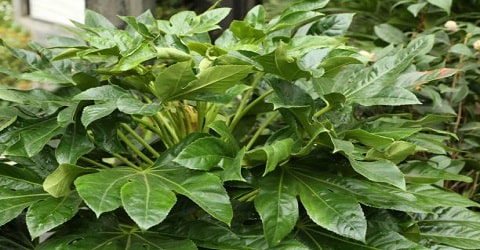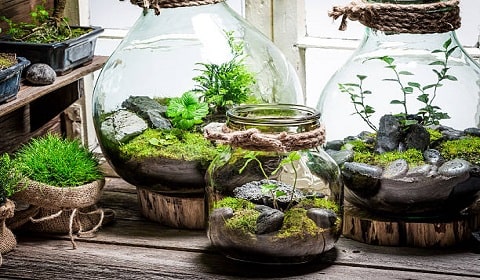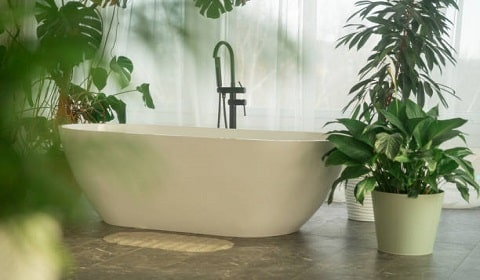Japanese Aralia, a botanical delight cherished for its elegance and resilience, offers an enchanting journey into the realm of horticulture. It one of the best indoor plants for east-facing windows. With its glossy, palm-shaped leaves cascading in verdant abundance, this exquisite plant captivates hearts and invigorates spaces with its timeless allure.
Cultivating Japanese Aralia is not merely a pastime; it’s a nurturing dance with nature, fostering growth and serenity in equal measure. Whether adorning a sunlit windowsill or gracing a lush garden corner, this verdant gem bestows a sense of tranquility and sophistication. Embrace the beauty of nature’s artistry as you cultivate and cherish the exquisite Japanese Aralia.
What Is Japanese Aralia?
Fatsia japonica, commonly known as fatsia, is an evergreen shrub adored for its lush foliage and elegant presence. With a spreading growth habit, it typically stands around six feet tall and wide indoors, though it can soar to 16 feet outdoors. Its glossy, palmate leaves boast deep lobes, usually numbering seven, nine, or 11, with younger leaves showing fewer and shallower lobes.
When new leaves emerge, they flaunt a soft fuzz of orange-tinted hairs. While indoor specimens rarely flower, outdoor plants boast fragrant white blooms in autumn, drawing in pollinators like wasps. These blooms give way to clusters of dark blue berries, housing seeds ideal for propagation, adding to the plant’s allure and charm.
Read More: Growing Roses in Pots Just In 10 Steps
Cultivation and History
Fatsia japonica, native to Korea and Japan, belongs to the Araliaceae family. Commonly known as fatsi, Japanese aralia, or paperplant, it thrives outdoors or indoors, withstanding cold temperatures. Taxonomically identified in 1854, it’s cherished for its glossy leaves and resilience. This versatile plant goes by many names, including big leaf paperplant and figleaf palm.
In USDA Hardiness Zones 7b to 10b, Japanese aralias flourish year-round as ornamental shrubs. Beyond its aesthetic appeal, it holds cultural significance in Korea and Japan, where its sprouts are savored as a delicacy. Fatsia japonica, a star of the houseplant world, embodies both beauty and practicality.
Table of Contents
Japanese Aralia (Fatsia japonica) Propagation
Fatsia japonica, a versatile plant, thrives in diverse settings, from shady gardens to sunny patios or as a houseplant in cool, well-ventilated rooms. Ideal for spring planting in moist, well-drained soil enriched with compost or manure.
Initially, keep it well-watered, then water sparingly in dry conditions. Propagate through semi-ripe cuttings in late summer. Japanese aralia houseplants propagate via seeds, cuttings, or transplants, with cultivars best propagated through cuttings due to seed variation.
From Seed
Growing paperplants from seed is an economical and straightforward process. Begin by obtaining fatsia seeds, which can be collected from outdoor shrubs that bloom in fall and bear berries in winter. Ensure the berries are ripe, dark blue, and free from pulp before harvesting the seeds. To enhance germination rates, sow more seeds than necessary.
Japanese aralia seeds, available in packs of 10 from Seedville on Amazon, offer another option. Germination methods include moist paper towel germination, propagation bags, or direct sowing into nursery pots.
Regardless of the method chosen, maintaining warmth and moisture is crucial for successful germination. Whether you’re starting with fatsia or Japanese aralia seeds, cultivating these paperplants is a cost-effective and achievable endeavor with the right preparation and care.
From Cuttings
Propagating Japanese aralia from cuttings offers an effective method for reproducing specific cultivars. Timing and technique are key to success in this process.
Select semi-ripe cuttings, identifiable by a woody base and green tip, ideally gathered from late summer to mid-autumn. Using sterilized garden snips minimizes the risk of disease spread. Take more cuttings than necessary, as not all may thrive.
Cuttings should measure four to six inches in length, with a clean slice just below a node—a swollen area where leaves emerge. Propagation can occur in water or growing medium.
For water propagation, place cuttings in a jar with regular water changes, ensuring a warm, bright location. Within about a month, roots should emerge, indicating readiness for potting.
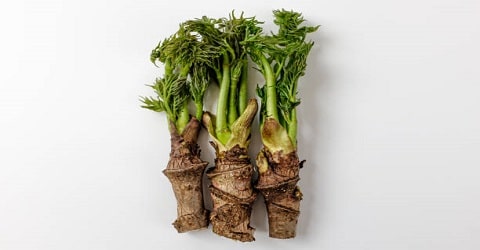
Alternatively, rooting in growing medium involves removing most leaves, dipping cut ends in rooting hormone, and placing them individually in moist-filled nursery pots. Maintain warmth and indirect light, keeping the medium consistently damp until rooting, typically within a month.
Once rooted, continue nurturing the plant in its pot until it exhibits signs of outgrowing its space. At this point, transplant it following standard procedures.
Read More: 14 Best Rose Gardening Ideas
From Transplants
When bringing a new plant home, the decision to transplant it depends on various factors. If the plant is drying out quickly between waterings or if it’s toppling over due to the small size of its container, then transplanting into a larger pot is advisable. Otherwise, it’s generally fine to keep it in its nursery pot or transfer it to a decorative pot of the same size.
For plants that have outgrown their current pots, choose a new one just slightly larger, ensuring it has drainage holes to prevent waterlogging. When repotting, utilize a suitable growing medium like Rosy Soil, which offers aeration and nutrients crucial for healthy plant growth. Rosy Soil, available from the Rosy Soil Store on Amazon, contains compost, pine fines, biochar, and beneficial mycorrhizal fungi.
To repot, place a layer of growing medium at the bottom of the new pot, then gently remove the plant from its current container, loosening the root ball’s edges. Adjust the height of the plant so the top of the root ball sits about an inch below the pot rim. Fill the sides with growing medium, ensuring not to cover the plant’s crown, then water thoroughly. Finally, return the plant to its usual spot.
How to Grow Japanese Aralia
Interested in learning more about the light, water, soil, and climate preferences of these stunning greenhouse beauties? Let’s dive in!
1. Introduction to Plant Care: When you bring home a fatsia, it’s wise to give it a thorough check for any pests or diseases. Don’t worry if you’re unsure what to look for just yet; we’ll cover that later in the article, so keep reading!
2. Pest and Disease Check: Even if your new plant appears healthy, it’s a good idea to quarantine it from your other houseplants for two to four weeks. This precaution helps ensure there are no unwanted critters hiding in the soil.
3. Quarantine Procedure: Japanese aralias are quite adaptable to various indoor lighting conditions, as long as they’re not subjected to too much direct sunlight. Optimal lighting for them includes indirect bright or medium levels, though they can tolerate low light as well. However, what might seem dim to us might be too dark for these plants indoors.
4. Lighting Adaptability of Japanese Aralias: To ensure your plants thrive, consider using light meters to gauge their luminosity needs. Japanese aralias, for instance, require at least 75 to 200 foot candles.
5. Optimal Light Conditions: If you’re growing paperplants outdoors, particularly during the summer, it’s best to place them in shaded areas or spots with dappled sunlight.
6. Importance of Light Meters: Once you’ve found the perfect lighting conditions for your Japanese aralia, it’s crucial to get the watering regimen right. Keep the soil consistently moist, avoiding soggy conditions. Fatsias, especially, will visibly wilt when they’re thirsty, so keep an eye out for dramatic drooping.
7. Watering Guidelines: Water your Japanese aralias when the top layer of soil feels dry to the touch, and aim for even watering using a narrow-spouted watering can.
8. Soil Preferences: These plants aren’t too picky about soil type as long as it’s rich in organic matter and well-draining. They do, however, prefer slightly acidic soil with a pH range of 5.5 to 6.0.
9. Temperature Preferences: Temperature-wise, Japanese aralias thrive best in a range of 60 to 80°F during summer but prefer cooler temperatures between 45 to 55°F in winter, avoiding exposure to temperatures below 10°F.
10. Ideal Location for Fatsias: For optimal growth, consider placing your fatsia on the north side of your home (for those in the Northern Hemisphere) to avoid excessive sun exposure.
11. Using Humidifiers: Humidity is another key factor to consider. Aim for levels of 60 percent or higher, especially if you’re in a low-humidity climate. Using a humidifier can quickly elevate humidity levels in the vicinity of your plant, ensuring its health and vitality.
Read More: Growing Healthy Roses: Best 10 Tips for Beginner
Growing Tips
Grow them in indirect bright, medium, or low light.
Keep the soil moist but not soggy.
Provide at least 60% relative humidity or higher.
Pruning and Maintenance
To ensure your Japanese aralia plant thrives, proper repotting is crucial as it outgrows its container. Signs indicating it’s time for a new pot include rapid drying between waterings, roots protruding from drainage holes, or toppling due to its weight. Opt for a pot only slightly larger than its current one and ensure it has drainage holes to prevent waterlogging.
When repotting, handle with care to avoid damaging the delicate roots. Pruning may be necessary for leggy growth or to reshape the plant, but avoid removing more than one third of the leaves at a time to prevent stress. Sterilize pruning tools between plants to prevent disease transmission.
Fertilizing your Japanese aralia is essential for optimal growth. Consider using worm compost or a balanced indoor houseplant fertilizer weekly during the growing season. Products like Dr. Earth’s Pump and Grow Indoor Houseplant Food can provide the necessary nutrients without overwhelming the plant.
By following these guidelines, you can maintain a healthy Japanese aralia that adds beauty to your indoor space while thriving in its new pot.
Managing Pests and Disease
Fatsia, commonly known as Japanese aralia, faces similar pest and disease challenges as other indoor plants. When introducing a new specimen, it’s crucial to inspect it thoroughly and quarantine it for a few weeks to prevent potential contamination of other houseplants.
Regular checks for pests like aphids, mealybugs, and scale are essential, especially underneath leaves and along stems. Scale infestations can deform leaves and leave a sticky substance called honeydew, which promotes fungal growth.
Neem oil is an effective and safe treatment for scale, aphids, or mealybugs. Weekly applications over several weeks, ensuring thorough coverage of both foliage and soil, can effectively eradicate these pests.
Additionally, root rot is a common concern, often indicated by wilting foliage despite moist soil. Prevention involves planting in well-draining soil and pots with adequate drainage.
Maintaining vigilance against pests, particularly scale, and diseases like root rot, is crucial for the health of Fatsia plants. Regular inspections, quarantine of new specimens, and timely treatment with neem oil can help ensure these striking plants thrive indoors.
Types of Japanese Aralia
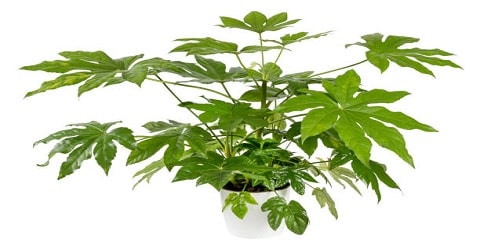
Fatsia japonica ‘Variegata’
The ‘Variegata’ variety showcases sizable, perennial leaves adorned with sporadic, ivory or white-tipped borders. Its flowering season occurs in late summer or early fall, marked by the emergence of circular bunches of creamy blossoms.
Fatsia japonica ‘Spider’s Web’
The ‘Spider’s Web’ fatsia earns its name from the abundant white and cream speckling that blankets its entire leaf. While the variegation might be subtle or absent during the initial years of this cultivar’s growth, after 3 or 4 years, it typically becomes more prominent.
Fatsia japonica ‘Moseri’
This variety showcases the familiar large, shiny, evergreen foliage characteristic of Japanese aralia shrubs. However, it stands out with its radiant bursts of petite white flowers reminiscent of futuristic mid-century lighting fixtures.
Companion Plants for Japanese Aralia
Combine Japanese aralia with other low-light plants to design a vibrant and captivating garden space.
Elephant’s Ear
Elephant’s Ear, a striking plant with captivating foliage, flourishes in partial shade or dappled sunlight, evoking a tropical ambiance. Resilient in zones 10 and 11, it can reach heights of around 8 feet and spans about 6 feet in width under optimal circumstances.
Lungwort
Lungwort, a perennial plant thriving in zones 2 to 8, boasts a low stature and thrives in shaded environments. Its vibrant blossoms herald the arrival of late summer or autumn blooms, complementing the Japanese aralia. These plants thrive in moist, well-drained soil but may wilt in warmer climates, so it’s best to offer them a sheltered spot away from direct sunlight.
